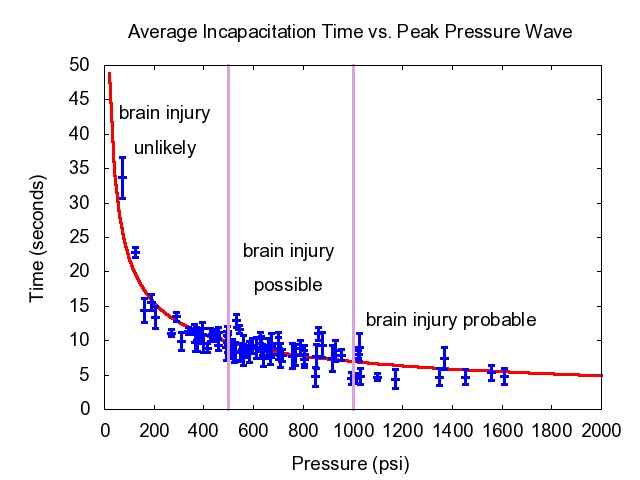Effect
It is crucial to
understand the composition of the body being impacted to
understand how the shock wave moves through the body.
All animal tissue is
comprised majorly by water and yet tissue is not liquid.
Most body tissue has
a viscous nature and is most comparable physically to
gelatin or cold honey.
The nature of the
tissue is what allows for the shock wave from the impact to pass
through the body in all direction not just in the direction of
motion of the projectile.
In the case of a
viscous medium, some of the kinetic energy from the collision is
transformed into a pressure wave cause by elastic collisions of
the of the molecules.
The pressure wave
moves through the body as the elastic collisions propagate through
the medium.
It is important then
to understand that in order to quantify the ballistic wave you
must calculate the loss of kinetic energy by the projectile.
Generally the
waves travel at a speed less than that of sound, this allows for
propagation throughout.
The propagation of
the pressure waves in a living creature eventually reach the spine
and or brain.
When the waves
collide with such important parts of the central nervous system
the results can be devastating, usually resulting in
incapacitation.
However in the case
that the speed of the pressure waves is greater than that of sound
then the wave will cause far greater damage still.
The high speed of the
waves often result in abrupt change of property for the material
experiencing the wave.
In cases where live
animals are subject to such a wave usually these affects can
be seen in the blood.
Coagulation of the blood
generally results from ultra high velocity waves.

http://en.wikipedia.org/wiki/Hydrostatic_shock

